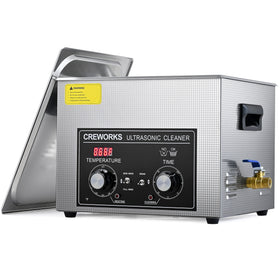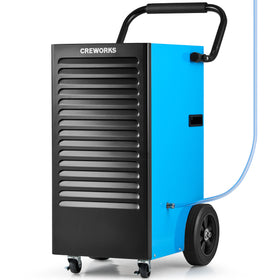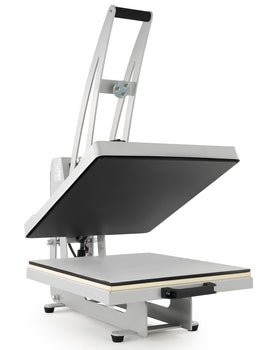With over 10000+ orders
With over 10000+ orders
If you've been shopping for an ultrasonic cleaner lately, you've probably noticed that ultrasonic cleaners manufacturers throw around a lot of power specs. But what do those numbers actually mean for your cleaning results? Today's blog will break down everything you need to know about ultrasonic cleaner power.
Let's start with the basics. When we talk about ultrasonic power, we're usually talking about "watts per gallon" – a measure that tells you how much cleaning power your machine delivers relative to its size.
Here's how to calculate it:
When calculating watts per gallon, we only care about the ultrasonic power (180W), not the heater power. The heater doesn't contribute to the cavitation cleaning process.
Now, to calculate watts per gallon:
1. First, convert the tank volume from liters to gallons:
2. Then divide the ultrasonic power by the volume in gallons:
That's it! This cleaner delivers about 114 watts per gallon, which is actually quite powerful.
Pro tip: Always separate the heater wattage from the ultrasonic wattage. Some manufacturers list combined wattage to make their units seem more powerful, but only the ultrasonic power matters for cleaning performance.

The short answer? It depends on what you're cleaning. But here are some general guidelines:
Most people are surprised to learn that more power isn't always better. For delicate items, too much power can actually damage surfaces. But for tough jobs like cleaning carburetors or removing carbon deposits, higher power is your friend.
Note: These application-specific power recommendations are consistent with standards published by the International Electrotechnical Commission (IEC) in their industrial ultrasonic equipment guidelines.

When ultrasonic energy hits your cleaning solution, it creates millions of tiny bubbles that implode against surfaces – that's cavitation doing the cleaning work. More power means more bubbles working harder, which translates to several benefits:
This is the big one. A higher-power unit might clean in 5-10 minutes what would take 30 minutes in a standard unit. If you're cleaning lots of parts or running a business, that time savings adds up fast.
One customer told us they reduced their parts cleaning time from 45 minutes to just 12 minutes by upgrading from a 50-watt-per-gallon unit to a 100-watt-per-gallon model. That's productivity you can take to the bank.
Higher ultrasonic power helps the cavitation reach into blind holes, tight crevices, and intricate parts where brushes and sprays simply can't go. For complex parts like:
The extra power ensures cleaning action reaches every nook and cranny.
Some soils just won't budge without serious power behind them:
Higher-power ultrasonic cleaners can break these down more effectively, often eliminating the need for harsh chemicals or manual scrubbing.
While powerful cleaners have their place, they're not for everything. Be careful with:
Thin plastics, soft metals (especially gold, silver, and lead), or items with polished surfaces can be damaged by intense cavitation. The same force that cleans can potentially pit or deform these sensitive materials.
I once had a customer who put a vintage watch with a plastic crystal into a high-powered cleaner – it came out clean, but with a frosted, cloudy surface from micro-etching. Not the result they were hoping for!
Parts with extremely tight tolerances might experience small but significant dimensional changes under aggressive cavitation. If precision matters down to the micron level, ease back on the power.
Electronics, optical components, or items with weak adhesive bonds may not withstand the mechanical stress from intense cavitation. Components could become detached during cleaning.
Here's a surprising fact: sometimes a more powerful cleaner can actually save energy in the long run. Here's why:
One manufacturing client reduced their overall energy consumption by 22% after upgrading to a higher-power unit, simply because they eliminated repeat cleaning cycles and reduced their total operational hours.

Selecting the proper power level comes down to balancing several factors:
The sweet spot for most applications is 50-75 watts per gallon – enough power for effective cleaning without risking damage to most items.
Sometimes it helps to see exactly which power levels work best for specific applications. I've put together this handy comparison table based on our testing and customer feedback:
|
Power Level (watts/gallon) |
Common Applications |
Notes |
|
25-50 |
Budget cleaners, very delicate items only |
Generally considered underpowered for most applications |
|
50-100 |
Professional equipment for sensitive items, quality consumer units |
Good balance for general purpose cleaning |
|
100-200 |
Standard for quality commercial/consumer units, including jewelry, dental, watch, and household cleaners |
Most popular high-quality cleaners fall in this range |
|
200-300+ |
High-performance units for demanding applications, fast cleaning |
Common in professional settings where time efficiency matters |
No. Ultrasonic cleaners require precise fill levels for optimal performance. Underfilling creates dead zones, risks transducer damage and reduces cavitation efficiency.
None. Heater wattage matters in terms of maintaining solution temperature, and it doesn't contribute to cavitation. Focus only on ultrasonic wattage for power calculations
Yes, excessive power can damage sensitive items. Potential risks include:
Always match power to material sensitivity. When cleaning valuable or delicate items, start with lower power settings and increase gradually if needed.
Frequency and power have an inverse relationship. Lower frequencies (25-40kHz) generally require more power for effective cleaning because:
Higher frequencies (80-130kHz) typically need less power while providing gentler cleaning action suitable for delicate items. A typical 40kHz system needs 50-100 watts per gallon for effective cleaning, while a 100kHz system might be effective at 30-60 watts per gallon.
For jewelry cleaning, the ideal power level depends on the type:
Professional jewelers often have multiple ultrasonic cleaners with different power/frequency combinations to handle various types of jewelry cleaning tasks.
If you're interested in learning more about ultrasonic jewelry cleaners specs, take a minute to browse our blog for more!
At the end of the day, ultrasonic power is just one factor in cleaning performance. The right frequency, proper cleaning solution, and appropriate temperature all play crucial roles too.
For most applications, the sweet spot tends to fall between 100-200 watts per gallon – providing enough power for effective cleaning without excessive energy consumption. This range offers an excellent balance of cleaning effectiveness and versatility for everything from jewelry to automotive parts.
Remember these key takeaways:

Armed with this knowledge about ultrasonic power, you're now better equipped to choose a cleaner that meets your specific needs.
Creworks offers a range of ultrasonic cleaners with varying power levels designed for different applications – from delicate jewelry cleaning to heavy-duty industrial parts. Each model features carefully calibrated power-to-volume ratios to deliver optimal cleaning performance for its intended use.
Browse Creworks' collection to find an ultrasonic cleaner with the perfect combination of size, power, and features for your specific cleaning challenges. With the right ultrasonic cleaner, you'll save time and achieve better cleaning results than you ever thought possible.











